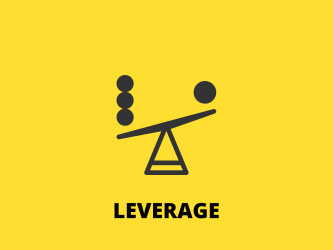Fundamentally To-Do Lists are Broken
Anurag Dhungana / July 23, 2023
4 min read • 141 views

Leverage Lists > To-Do Lists
This is my interpretation of something that George Mack wrote.
Leverage is the key. The leverage of people, technology, and financial assets to produce results without spending additional energy, time, or effort is the way to move forward.
Introduction
In today's fast-paced world, managing time efficiently is crucial for productivity and success. To accomplish tasks, many people rely on traditional to-do lists, outlining the actions they need to complete regularly. While to-do lists have been popular for a long time, they might not be the most effective approach to task management. This article explores the concept of "Leverage Lists" as an alternative to traditional to-do lists. Leverage lists empower individuals to invest in time assets, ultimately increasing productivity and efficiency.
Naval Ravikant defines three broad classes of leverage.
You don’t have leverage when your input and outputs are highly connected.
You don’t gain leverage by renting your time. “A leveraged worker can out-produce a non-leveraged worker by a factor of one thousand or ten thousand,” writes Naval.
There are three broad categories to leverage:
1 The leverage of labor.
When other humans work for you, you get their time as a capacity of work or outputs.
But this is the worst form of leverage as leveraging people is messy. It requires excellent leadership skills.
2 The leverage of money.
Every time you make a financial decision, you can multiply it with money.
It scales well. You can manage more capital than you can more people.
3 The leverage of permissionless products.
These are “products with no marginal cost of replication.”
“They don’t require somebody else’s permission for you to use them or succeed.” These types of products are media, books, movies, and code.
“Code is probably the most powerful form of permissionless leverage.”
You can multiply your efforts without needing money or people to give you permission.
The Problem with To-Do Lists
Time Liabilities Requiring Constant Willpower
To-do lists often become time liabilities rather than assets. They require continuous willpower and effort to complete tasks, causing mental fatigue and stress. As a result, people may find themselves struggling to stay motivated and focused.
Limited Time Horizon
To-do lists usually have a limited time horizon. They focus on short-term goals, leading individuals to overlook long-term opportunities for growth and improvement.
Introducing Leverage Lists
What are Leverage Lists?
Leverage lists differ from traditional to-do lists in their approach to task management. Instead of merely listing actions to complete, leverage lists emphasize finding actions that work for you even after their initial completion.
Example of Leverage List
- To-Do List Item: Train someone on the dev team.
- Leverage List Item: Record the training so that it can be re-used.
In this example, the traditional to-do list item is completed when the training is finished. However, the leverage list item ensures that the effort put into training is leveraged for future use, saving time and effort in subsequent training sessions.
The Power of Leverage Lists
Time Assets with Long-Term Benefits
Leverage lists are time assets. They demand willpower and effort only once but continue to provide benefits in the future. By investing in time assets, individuals can significantly increase their overall productivity and efficiency.
Reducing Time Liabilities
By adopting leverage lists, individuals can actively reduce and avoid time liabilities associated with traditional to-do lists. This shift in approach allows for a more proactive and sustainable task management system.
How to Invest Time for Optimal Results
Identify High Leverage Actions
The first step in leveraging time effectively is to identify high leverage actions - tasks that have long-term benefits and can be reused or optimized in the future.
Prioritize Long-Term Goals
Rather than focusing solely on short-term objectives, it's essential to prioritize long-term goals and invest time in actions that contribute to ongoing success.
Review and Optimize
Regularly review and optimize leverage lists to ensure they remain relevant and aligned with changing goals and circumstances.
Learn from Experience
Use past experiences to identify actions that have worked well and add them to the leverage list for future application.
Conclusion
In conclusion, to-do lists, while widely used, may not be the most effective approach to time management. Leverage lists provide a more efficient way to invest time, turning tasks into time assets with long-term benefits. By prioritizing time assets over time liabilities, individuals can significantly increase productivity and achieve success in both their personal and professional lives.